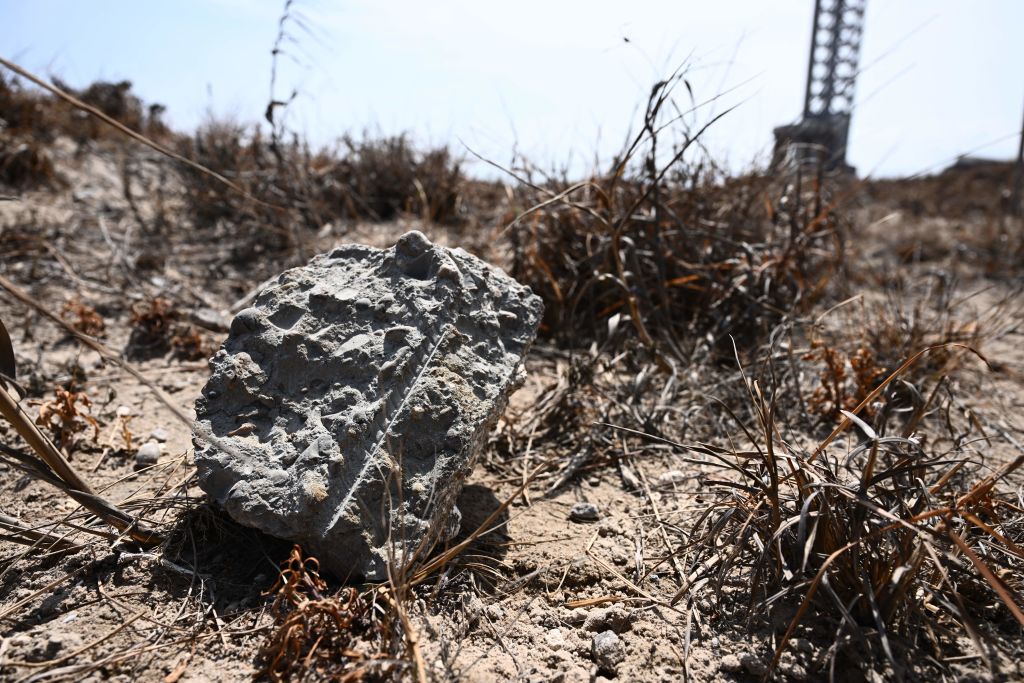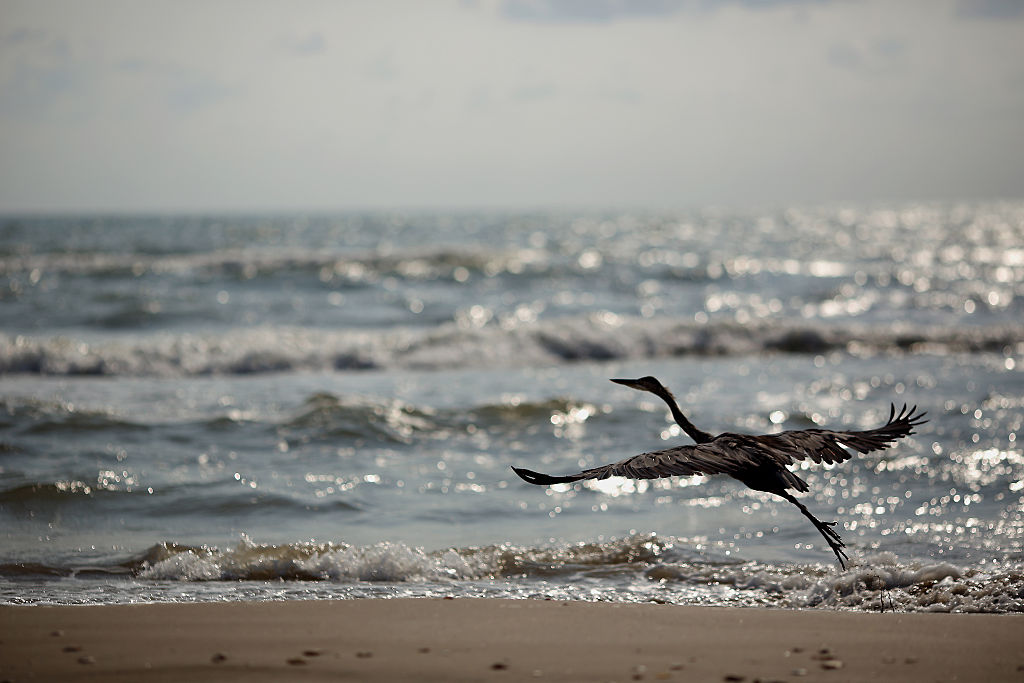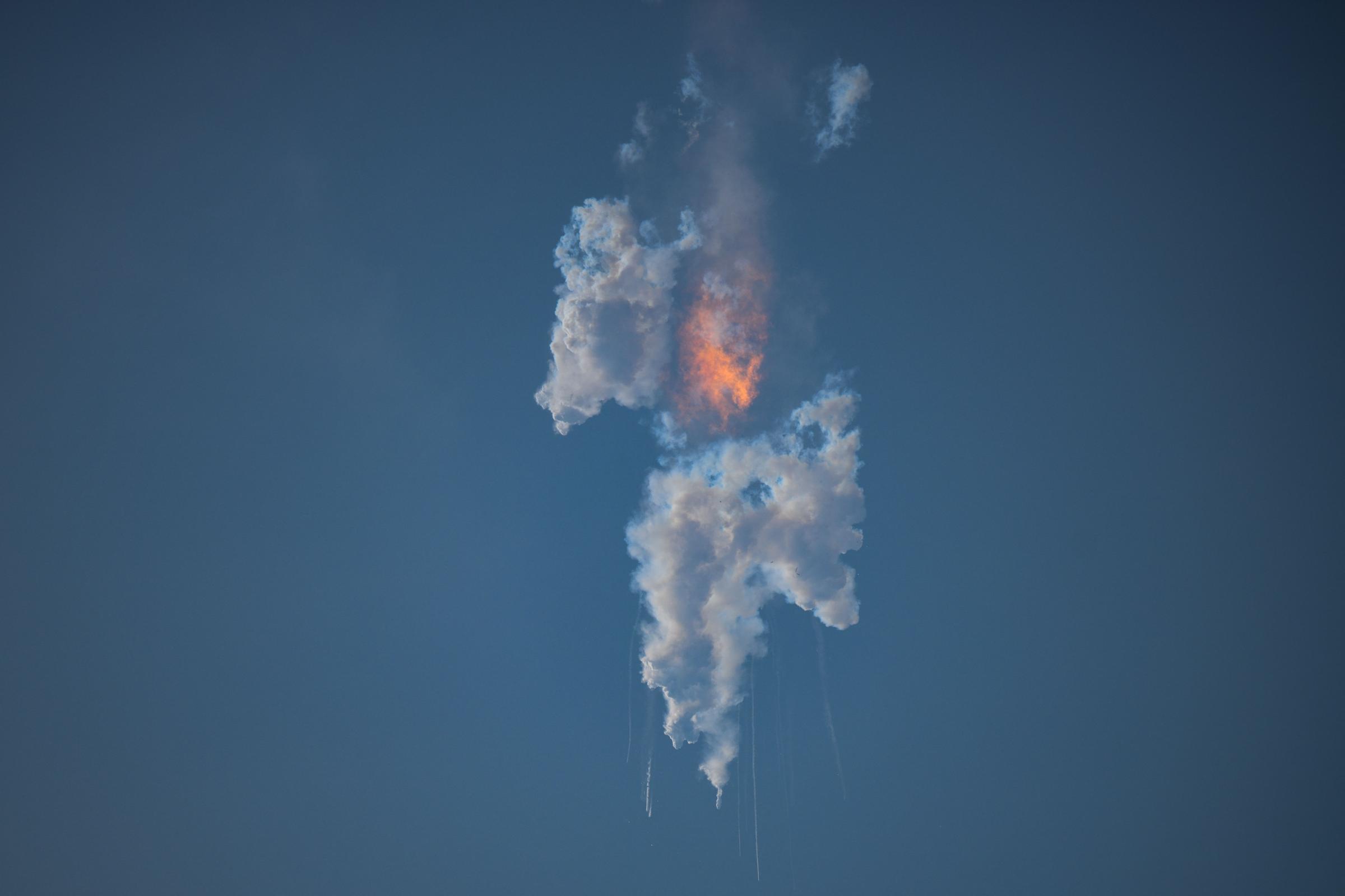Nobody knows how many birds were killed when SpaceX’s Starship rocket—the largest, most powerful rocket ever built—took off and blew up during its inaugural launch on April 20. And the odds are nobody will ever know.
“Birds are small,” says Mike Parr, president of the American Bird Conservancy. “Anything that gets burnt up like that will basically vaporize, so we can’t really assess it.”
Nobody will know what other animals were killed either—the jaguarundi wildcat that makes the wilds around SpaceX’s launch site in Boca Chica, Texas, its home; the endangered Kemp’s Ridley sea turtle; the ocelots that are sacred to the local Carrizo-Comecrudo native American tribe. (The land itself is considered sacred by the Carrizo-Comecrudo as well.) The lack of any census on animal deaths is due mostly to the fact that, following the explosion, the U.S. Fish and Wildlife Service closed the beach and highway in Boca Chica for safety concerns, meaning that the carcasses of animals could have been eaten by predators before being tallied.
But closing the area was the prudent choice, given the force of the explosion. As the Fish and Wildlife Service explained in an email to the media, the footprint of the blast was vast. Much of the damage was done at the moment of launch, when the force of the rocket’s first-stage engines destroyed the launch pad.
“Impacts from the launch include numerous large concrete chunks, stainless steel sheets, metal and other objects hurled thousands of feet away along with a plume cloud of pulverized concrete that deposited material up to 6.5 miles northwest of the pad site,” the Fish and Wildlife Service wrote. Approximately 385 acres of debris was found on both SpaceX’s facility and in the surrounding Boca Chica State Park, and a 3.5-acre fire burned on park land south of the launch site.
And this is a flight SpaceX considers a success since the rocket did manage to clear the launch tower and fly for four minutes before consuming itself in a ball of fire. “Congrats @SpaceX team on an exciting test launch of Starship!” SpaceX boss and founder Elon Musk tweeted. “Learned a lot for next test launch in a few months.”
Such optimism notwithstanding, that next test flight is very much open to question. Environmental concerns will likely determine when Starship has another opportunity to fly. If SpaceX wants to get that chance, it would serve itself well by modeling practices that are already available: NASA’s long and impressive track record of including environmental modeling and safeguards into all of its launch assessments.

Ten days after the April SpaceX launch, five groups—the Center for Biological Diversity, the American Bird Conservancy, the Surfrider Foundation, Save RGV (short for Rio Grande Valley), and the Carrizo/Comecrudo Nation of Texas—filed suit against the Federal Aviation Administration (FAA) for its alleged failure to vet SpaceX’s environmental protocols adequately before clearing Starship to fly. The groups are demanding that a federal court in Washington, D.C. revoke the five-year license the agency granted SpaceX to conduct up to 20 launches, until the FAA conducts a full environmental impact study of the explosion and of the future risks SpaceX’s launch activities pose to the surrounding environment.
“We’re seeking to have it sent back to the agency for a full-blown, full-out analysis,” says Jared Margolis, senior attorney at the Center for Biological Diversity. “It’s not just the explosion. The heat and the light and the noise was way more than I think they had anticipated from this launch.” (“The FAA does not comment on ongoing litigation matters,” the agency said in an email to TIME.)
Notwithstanding, on May 18, SpaceX rolled another Starship out to the pad for engine tests preparatory to a launch that will come only after the current lawsuit is resolved. On May 22, SpaceX’s request to join the FAA as a co-defendant in the lawsuit was granted by a federal judge—a standard move by a company whose own permit to fly is in jeopardy by a lawsuit. Collaborating with the FAA will give SpaceX more influence over the defense strategy.
The SpaceX mess stands in sharp contrast to NASA, which has long shared its Kennedy Space Center home with the Merritt Island National Wildlife Refuge, a preserve that is home to more than 1,500 species of plants and animals. Sixty years and thousands of launches—including 135 of the space shuttle alone and 18 of the massive Saturn 5 rocket—produced nothing like the devastation wrought on the Boca Chica area by just one Starship launch. The reason lies partly in the engineering—the Starship launch pad was simply not built robustly enough to withstand the blast of the first stage’s 33 engines—and, according to the plaintiffs in the lawsuit, partly bureaucratic: the lawsuit claims neither the FAA nor anyone else ever conducted the kind of full environmental impact study necessary to protect Boca Chica before the launch took place.
“This is one of the most biologically diverse areas in the country,” says Margolis. “So perhaps this isn’t the right place to be blowing up these rockets. But if they’re going to move forward, they certainly need to do a full analysis and make sure they’re imposing sufficient mitigation, which we don’t believe they’re doing.”
Learning from NASA
What SpaceX isn’t doing, NASA assuredly does—and it isn’t easy. The Kennedy Space Center (KSC) measures 140,000 square acres, but just 5,500 of them have been developed for space operations. The rest encompasses the Merritt Island preserve and the Canaveral National Seashore—both of which have remained untouched by generations of NASA launches. Environmental groups have recently criticized some proposals floated by the commercial space sector and NASA to build a spaceport on Kennedy Space Center land that would send rockets flying over the Merritt Island Preserve instead of straight out over the ocean—but those projects are nowhere near fruition and the environmental sector is mounting stiff opposition.
The safeguards responsible for NASA’s impressive environmental record begin whenever a new rocket—whether the venerable Saturn 5, the just-developed Space Launch System, or SpaceX’s Falcon 9 and Falcon Heavy—is first under design and construction. “All new rockets which are proposed to launch from Kennedy require significant safety and environmental analysis prior to launch,” says Don Dankert, KSC’s Spaceport Integration Environmental Planning Lead. “Years of design, development, and testing—including ground tests, simulations, and flight tests—occur before a rocket is certified for launch operations.” The fact that the two SpaceX rockets underwent that kind of vetting suggests the company would know what a robust environmental assessment looks like.

Once a rocket is built, it has to overcome still more hurdles before it is cleared to fly. A complete environmental impact analysis is conducted in accordance with the Environmental Protection Agency’s National Environmental Policy Act (NEPA), and, depending on the scale of the project and the size of the rocket, a formal environmental impact statement (EIS) must then be filed. NASA and the EPA do not work alone on the analysis. “Specifically,” says Dankert, “the FAA, U.S. Fish and Wildlife Service, and others may be invited to serve as cooperating agencies when assessing [potential] impacts.” Only after that environmental impact analysis is conducted does the FAA give the rocket the green light to fly.
Such standards are not limited to launches. Environmental oversight is conducted during construction of rockets, launch pads, buildings, and other infrastructure, as well as during routine maintenance, though in these cases, a full EIS is not typically required. Still, the work “must comply with NEPA and all applicable environmental laws and regulations,” Dankert says. When it comes to actual launches, environmental oversight goes well beyond the liftoff alone. “Kennedy conducted pre- and post-launch ecological monitoring for the 30 years of the shuttle program,” says Dankert. “And this monitoring continues with the Artemis [moon] program.” NASA also ensures that cultural resources are not affected by any launch or construction activities—avoiding the kind of complaints lodged by the Carrizo/Comecrudo Nation of Texas in the lawsuit against the FAA.
What Went Wrong at Boca Chica
All of this stands in stark contrast with the way things unfolded at Boca Chica both leading up to and during the Starship launch. The first and perhaps biggest problem involved who was doing the environmental assessment and how it was conducted. The FAA is not required to receive a full EIS before approving a launch. Instead, under NEPA, a lesser analysis, known as a programmatic environmental assessment (PEA) can be filed, and it can be conducted by commercial entities—even ones associated with the rocket’s owner. Especially troubling, as the plaintiffs in the lawsuit against the FAA charge, is that this is what appears to be the case with the Starship launch, with independent contractors retained by SpaceX conducting the PEA, and the Federal Register publishing the positive results.
“This is the fox guarding the hen house,” says Mary Angela Branch, a board member with Save RGV.

Just why the FAA imposed such lenient standards is not clear. Back in 2014, the agency itself conducted an environmental analysis and issued a full EIS when SpaceX was considering launching its smaller Falcon 9 rocket from the Boca Chica site. The license that resulted from that EIS authorized one Falcon 9 per month for a year and gave SpaceX permission to close the local beaches for 180 hours to accommodate the operations.
“The FAA did do an EIS for that permit and originally stated they were going to do one for the [Starship] permit,” says Margolis. For reasons that are not clear, however—but could be determined during the course of the lawsuit—SpaceX got a waiver from that requirement and an EIS was not filed for Starship. (SpaceX did not respond to a request for comment.)
Whatever the reason for the FAA foregoing a full environmental impact study, the result was good for SpaceX. The company’s independent analysts proposed, and the FAA accepted, what’s known as a Mitigated Finding of No Significant Impact (FONSI). The FONSI portion of that label indicated that the FAA agreed that no meaningful harm would be done to the environment by the Starship launch; the “mitigated” qualifier referred to 75 steps SpaceX had to take in order to minimize the impact of the launch on the Boca Chica area. Among the mitigations were limiting launch site lighting to reduce the nighttime impact on wildlife; implementing measures to reduce noise from construction equipment; restoring any damage to surrounding terrain caused by construction or other operations; controlling spillage of hazardous chemicals like rocket fuel; cleaning up spills that do occur; and more.
The problem was, there are poor enforcement mechanisms in place for any of these mitigation requirements. According to the Federal Register, a mitigated FONSI will be issued on the condition that “the [relevant] agency or a project applicant commits to carry out the mitigation, and establishes a mechanism for ensuring the mitigation is carried out.” Nowhere does the Register specify how adherence to that commitment will be confirmed. In the case of Starship, that left the responsibility to comply with the mitigated FONSI dependent on SpaceX’s cooperation alone.
“All of the mitigation plans said, ‘SpaceX shall conduct biological surveys,’ ‘SpaceX shall work with cooperating agencies on anomalies,’ ‘SpaceX shall use the best possible lighting or minimize lighting,’” says Branch. Save RGV and the other four plaintiffs, she says, “never got any reports on what they were actually doing and you’d have to have a full-time watchdog to oversee them, which we didn’t have. But nonetheless the permit was issued.”
The result was the fire and the debris and the concrete-dust-covered mess the Fish and Wildlife Service described in its release. Whether more stringent requirements will be imposed when Starship next launches will be known only when the lawsuit against the FAA is settled—a process that has no fixed time frame, despite Musk’s claim that another launch was coming in “a few months.”
For now, the Starship rocket SpaceX rolled out to the pad on May 18 remains grounded—as is the entire Starship fleet on which SpaceX is betting its plans for journeys to the moon and Mars. Learning from the careful way NASA does its environmental business—and the way it’s done that business for more than six decades—may avoid another launch calamity in the future. And it may be the only way for SpaceX’s new mega-rocket to take back to the skies.
More Must-Reads from TIME
- Caitlin Clark Is TIME's 2024 Athlete of the Year
- Where Trump 2.0 Will Differ From 1.0
- Is Intermittent Fasting Good or Bad for You?
- The 100 Must-Read Books of 2024
- Column: If Optimism Feels Ridiculous Now, Try Hope
- The Future of Climate Action Is Trade Policy
- FX’s Say Nothing Is the Must-Watch Political Thriller of 2024
- Merle Bombardieri Is Helping People Make the Baby Decision
Write to Jeffrey Kluger at jeffrey.kluger@time.com